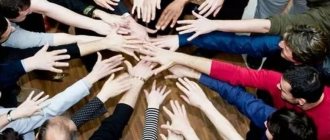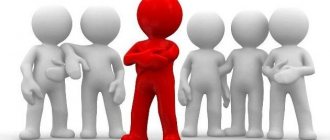3K 6 min.
In 1909, the second and final part of his work, “The Herd Instinct and Its Influence on the Psychology of Civilized Man,” was published in the journal Sociological Review. Trotter discussed his concept of human social herd in more detail in the book “The Herd Instincts in War and Peace,” which he wrote in 1916 at the height of the First World War.
Photo: Alexander Petrosyan, Kommersant / buy photo
Photo: Alexander Petrosyan, Kommersant / buy photo
In the book, Trotter believed that looking for the causes and derivatives of the herd instinct is pointless, since it is primary and insoluble. He considered the instincts of self-preservation, nutrition, sexual and herd to be primary, basic instincts. The first three, according to Trotter, are primitive and are accompanied by a feeling of satisfaction in case of successful implementation. The herd instinct, as Trotter writes, causes “an obvious obligation to act the other way around”: a person is ready not to care about self-preservation, to experience a lack of food and to show resistance to carnal impulses, submitting to a different imperative. Simply put, in a crowd, a person obeys an instinct that may be contrary to his personal benefit.
Crowd psychology or what is herd feeling?
Science knows the concept of “crowd psychology”. It explains what the herd feeling is and how it manifests itself, namely:
A crowd of people is more aggressive than an individual; The crowd is easily susceptible to emotion and suggestion; The crowd is not able to assess the situation with a “cold” mind; The crowd does not reason or ask questions; The crowd is malleable, it is easy to push it to a mass event (riot, rally, protest, criticism, condemnation); The crowd does not accept individuality; The crowd acts at the direction of the leader, without thinking or weighing its own actions.
This is inexplicable, but sometimes even intellectually developed people are subject to “herd mentality.” In an exaggerated way, it happens like this: once at a protest, a person chants slogans with those around him, and when left alone, he thinks and understands that his own “I” does not want to express protests, condemn and demand changes.
Or seeing a crowd of people running in an unknown direction, a person joins them, without understanding why. Subconsciously, he believes that since everyone is running, that means I should too. In this state, people are capable of finding themselves in a completely unfamiliar area, and then “biting their elbows”, wondering how to get home.
Manifestations of herd feelings are well remembered by people who found themselves in queues in the USSR. A man stood for hours for a thing that he, in general, did not need. They did this because “other people take it, so I need it too.”
Submitting to the energy of the crowd is a direct path to failure, negative thoughts, loss of time, false aspirations and even illness. The pattern of development of the disease is simple, and older people are especially susceptible to this. Someone tells an elderly man that the main thieves sit in government bodies. The elderly person does not have the opportunity to verify this personally, and he blindly believes the speaking “well-wisher”. As a result, a person thinks about it with increasing negativity. Having succumbed to suggestion, he becomes nervous, filled with anger, and negative emotions may well lead to a heart attack.
Alcoholism is also an example of a herd mentality. Why does someone who follows a healthy lifestyle become a drinker when they find themselves in the company of alcohol lovers? The reason is clear: when others drink, it is difficult to resist; the energy of the drinkers absorbs individual beliefs. They also become smokers and drug addicts “for company.”
Reproduction of instincts
Instincts in the science of human psychology appeared in the 18th century in the works of French encyclopedists and were borrowed by them from biology. At the beginning of the 19th century, Lamarck finally formulated the concept of instinct in animals “as an inclination caused by sensations based on the needs that arose due to their needs and forcing them to perform actions without any participation of thought, without any participation of the will.”
At first, transferring to a person actions performed without any participation of thought and will required a certain amount of courage from the scientist. But after Darwin the situation became reversed. The great Darwin himself wrote that instincts appeared as a result of evolution, and who was the crown of evolution according to Darwin? This is precisely what Homo sapiens was, and it was now risky for a scientist to deny instinctive behavior in humans.
Further, if earlier instincts existed only in theory and all evidence of their reality was indirect, then Ivan Pavlov experimentally proved their existence, however, calling them “complex unconditioned reflexes.” It took half a century for scientists to again begin to doubt the existence of human actions “without any participation of thought, without any participation of will.” In the meantime, psychologists have only tried to separate inherited elements of behavior from those acquired in early childhood.
Different scientists came up with different numbers of such inherited instincts. American psychiatrist Abraham Brill believed that “everything in life can be reduced to two fundamental instincts: hunger and love; they rule the world." The British neurosurgeon Wilfrid Trotter, as we have seen, has four. His compatriot, the physiologist William McDougall, the author of the first textbook on social psychology, first had seven of them, then (as the textbook was republished) there were 11, and then 18. Other scientists had 20, 30, 40 or more.
Scientists simply selected the appropriate instinct in an animal for each type of human activity or social institution. For example, it was believed that economic relations grew out of the instinct of nutrition, the family is built on a rationalized sexual instinct, war is based on the instinct of struggle, the state is based on the instincts of herd and fear. Their review can be read in the works of St. Petersburg University professor Dmitry Gorbatov. Continuing this series, it is not difficult to select instincts for any phenomenon in life: from participation in the green movement to gay orientation.
Herd mentality and the law of five percent
In psychology there is the concept of “auto-synchronization”. It manifests itself like this: if 5% of the members of a society perform a specific action, the remaining members will also repeat it. If you spook 5% of the horses in a field, the entire herd will bolt. If 5% of pigeons fly, the whole flock will fly up.
This is also typical for human society. Scientists from England conducted an experiment. Several people were invited into a large room. Of these, 5% were instructed to move along a specific trajectory, the rest were told that they could move in any direction. As a result of the experiment, all the people in the room unconsciously moved along a given trajectory. The theory of five percent can be confirmed by everyone. After attending a concert with a group of friends, start clapping at the moment you see fit. The whole room will eventually repeat after you.
Launching auto-synchronization is possible in a team where people are not aware of their own actions and do not think about the purpose and reason. If the level of self-control is low, there is no need to tell everyone what to do - 5% of people in society will start this process.
The Law of Five Percent is actively used by marketers. Starting a rumor that soon there will be no specific type of product left on the shelves. 5% of people will believe this and rush to buy up the supposed shortage. By their own behavior they will trigger mass panic and in the next couple of days there will really be no goods left.
References
- Fromlet, Hubert. "The Predictability of Financial Crises: Lessons from Sweden for Other Countries." Enterprise Economics 47.4
- ^ a b
"Asch's Matching Experiment".
Just psychology
. Received 2019-02-04. - "Sheep in human clothing - scientists reveal the mentality of our flock." University of Leeds Press Office. February 14, 2008
- ^ a bc Taylor
, Sean J.;
Aral, Sinan; Muchnik, Lev (08/09/2013). "Social Influence Bias: A Randomized Experiment." The science
.
341
(6146):647–651. doi:10.1126/science.1240466. ISSN 0036-8075. PMID 23929980. - ^ a b c
Chang, Kenneth (2013-08-08).
"'Like this article online?' Your friends will probably approve too, scientists say." New York Times
. ISSN 0362-4331. Retrieved 2019-02-06.
further reading
- Bloom, Howard, The Global Brain: The Evolution of Mass Intelligence from the Big Bang to the 21st Century
. (2000) John Wiley and Sons, New York. - Freud, Sigmund Massenpsychologie und Ich-Analyze
(1921; English translation
Group Psychology and Ego Analysis
, *1922). Reprinted 1959, Liveright, New York. - Gladwell, Malcolm, The Tipping Point: How Little Things Can Make a Big Difference
. (2002) Little, Brown & Co., Boston. - Le Bon, Gustav, Les Lois Psychoologique de l'évolution des peuples
. (1894) National Library of France, Paris. - Le Bon, Gustave, The Crowd: A Study of Public Opinion
. (1895) Project Gutenberg. - Martin, Everett Dean, The Behavior of Crowds
(1920). - MacPhail, Clark. The Myth of the Madding Crowd (1991) Aldin-DeGruyter.
- Trotter, Wilfred, Herd Instincts in Peace and War
. (1915) Macmillan, New York. - Suroweiki, James: The Wisdom of Crowds: Why the Many Are Smarter than the Few and How Collective Wisdom Impacts Business, Economics, * Societies, and Nations
. (2004) Little, Brown, Boston. - Sunstein, Cass, Infotopia: How Many Minds Produce Knowledge
. (2006) Oxford University Press, Oxford, UK.
What are the benefits of herd mentality?
Man is a social being. Life without other people is unnatural for a person. Despite the fact that humans have evolved far from animals, we are no different from primates when it comes to collective consciousness. One of these phenomena is the herd feeling.
The everyday idea of herd feeling is negative, which is also, in general, a manifestation of the herd instinct. People tend not to have their own opinions, but to completely trust the statements of an authoritative person or group of people. People generally do not require confirmation or justification. This feature is actively manipulated by the media, marketers, politicians and public figures.
Once psychologists reported that herd mentality is not good, people believed it without thinking about the evidence. People take advantage of the convenient opportunity to repeat other people's thoughts, although the manifestations of herd feelings are not clear-cut.
What are the advantages of the herd instinct? Of course, an aggressive crowd of people, when everyone around them acts as a single organism, without thinking or asking questions, is rather an extreme manifestation of the herd instinct. But there is still a positive component in the herd feeling. Let’s say that the vast majority of reasonable people will not travel along a dangerous road if they have been warned about it. The herd feeling in such cases saves lives and helps to take profitable actions.
In order not to fall into the trap of crowd energy and become a victim of herd mentality, you need to learn to use your brain 100% and remain calm in critical situations. The crowd can both save and destroy. By showing awareness and “coldness” of the mind, you can avoid many negative influences from the outside.
see also
- Anonymity
- Argumentum ad populum
- Bandwagon Effect
- Collective mind
- Correspondence
- Critical mass (sociodynamics)
- Crowd insults
- Crowd Psychology
- Decentralized decision making
- Delphi method
- The first companies to implement
- Folie à deux
- Freethinking
- Groupthink
- Herd behavior
- Information cascade
- List of the most disliked videos on YouTube
- Mass psychogenic illness (Mass hysteria)
- Monkey see monkey do
- Leadership Opinion
- Peer pressure
- Forecasting market
- Riot
- Sheeple
- Social network
- Wisdom of the crowd
- Trial in the media
Philosophers
- Soren Kierkegaard
- Friedrich Nietzsche
- Jose Ortega y Gasset
- Everett Dean Martin
One said, others echoed
For what reason can people be collectively mistaken? Moreover, we are not even talking about a dozen or a hundred people, but about thousands and millions. It's simple: one very charismatic and powerful leader expressed an incorrect judgment, and others approved his opinion, based on his authority, picked it up - and away we go. And now everyone around believes that white is actually black, and vice versa. And all because the one who inspired the delusion was mentally stronger than others, for whom it is easier not to stand out, but to listen to someone.
Recommendations
- Braha, D. (2012). "Global civil unrest: spread, self-organization and forecast." PLOS ONE
.
7
(10):e48596. Bibcode:2012PLoSO ... 748596B. Doi:10.1371/journal.pone.0048596. PMC 3485346. PMID 23119067. - Raafat, R. M.; Chater, N.; Frith, K. (2009). "The Herd among Men" (PDF). Trends in Cognitive Sciences
.
13
(10): 420–428. doi:10.1016/j.tics.2009.08.002. PMID 19748818. S2CID 15372828. - Burke, C.J.; Tobler, P.N.; Schultz, W.; Baddeley, M. (2010). “Striatal’s BOLD response reflects the impact of herd information on financial decisions.” Frontiers in Human Neurobiology
.
4
: 48. doi:10.3389/fnhum.2010.00048. PMC 2892997. PMID 20589242. - ^ a b
Hamilton, W. D. (1971).
"Geometry for the Selfish Herd." Journal of Theoretical Biology
.
31
(2):295–311. Doi:10.1016/0022-5193(71)90189-5. PMID 5104951. - Altshuler, E.; Ramos, O.; Nuñez, Y.; Fernandez, H. "Panic-Induced Symmetry Breaking in Fleeing Ants" (PDF). University of Havana, Havana, Cuba. Retrieved 2011-05-18.
- Altshuler, E.; Ramos, O.; Núñez, Y.; Fernández, J.; Batista-Leyva, A. J.; Noda, K. (2005). "Breaking the symmetry of fleeing ants." American naturalist
.
166
(6):643–649. Doi:10.1086/498139. PMID 16475081. S2CID 7250726. - Markus K. Brunnermeier, Asset Prices According to Asymmetric Information: Bubbles, Crashes, Technical Analysis and Collection
Archived 2007-09-29 on the Wayback Machine, Oxford University Press (2001). - Robert Prechter, The Wave Principle of Human Social Behavior
, New Classics Library (1999), pp. 152–153. - ^ a b
Shiller, Robert J. (2000).
Irrational exuberance
. Princeton University Press. pp. 149–153. ISBN 9781400824366. Retrieved March 4, 2013. - In Focus article (June 8, 2012), "WNFM: Focus one year after Fukushima," Reproduced from Nuclear Market Review
, TradeTech, retrieved March 4, 2013 Several In Focus articles are reproduced on this page. The corresponding one is at the bottom under the heading in this link. - UraniumSeek.com, Gold Seek LLC (August 22, 2008). "Uranium Depleted: Two Uranium Bulls to Jump." UraniumSeek.com. Retrieved 2011-09-19.
- “Review of the uranium bubble and special equipment market.” news.goldseek.com. Retrieved 2011-09-19.
- Golub, Ben; Sadler, Evan (2016-04-14), Bramullet, Yann; Galeotti, Andrea; Rogers, Brian (ed.), "Learning in Social Networks", The Oxford Handbook of Network Economics
, Oxford University Press, pp. 503–542, doi:10.1093/oxfordhb/9780199948277.013.12, ISBN 978-0-19-994827- 7, received 2020-05-30 - Morris, Stephen; Shin, Sung Hyun (November 2002). "The Social Value of Public Information" (PDF). American Economic Review
.
92
(5):1521–1534. Doi:10.1257/000282802762024610. ISSN 0002-8282. - Ostrovsky, Mikhail (2012). "Information Aggregation in Dynamic Markets with Strategic Traders." Econometrica
.
80
(6):2595–2647. Doi:10.3982/ECTA8479. ISSN 1468-0262. - ^ a b
"Shiple".
Merriam-Webster Dictionary
. - "Shiple." Dictionary.com
. Retrieved May 6, 2022. - "Shiple." Word Spy
. Retrieved May 6, 2022. - Anderson, W. R. (1945-01-01). "Around the Radio". Musical Times
.
86
(1225): 80–84. Doi:10.2307/933326. JSTOR 933326. - Rogers, Ernest (1949-01-01). Old hokum bucket
. A. Love Enterprises. - Bob Davis, "In New Hampshire, 'Live Free or Die' Is More Than a Motto," The Wall Street Journal, 1984, quoted online at Word Spy
- "A Nation of Sheep", Capitalism Magazine
, October 19, 2005 - Banerjee, Abhijeet V. (1992). "A simple model of herd behavior." Quarterly Journal of Economics
.
107
(3):797–817. CiteSeerX 10.1.1.363.5041. Doi:10.2307/2118364. JSTOR 2118364. - Bikhchandani, Sushil; Hirshleifer, David; Welch, Ivo (1992). "A Theory of Fads, Fashions, Customs, and Cultural Changes as Information Cascades." Journal of Political Economy
.
100
(5):992–1026. CiteSeerX 10.1.1.295.578. doi:10.1086/261849. S2CID 7784814. - Fruit, K; Schaferstein, D.S.; Jeremy Stein, J (1992). "The Herd on the Street: Information Inefficiency in a Market with Short-Term Speculation" (PDF). Journal of Finance
.
47
(4):1461–1484. Doi:10.1111/j.1540-6261.1992.tb04665.x. S2CID 53543777. - Hirshleifer, D; Teoh, S. H. (2003). "Herd Behavior and Cascading in Capital Markets: A Review and Synthesis" (PDF). European financial management
.
9
(1): 25–66. Doi:10.1111/1468-036X.00207. - Chen Yi-Feng (09/01/2008). “Herd Behavior in Online Book Buying.” Computers in Human Behavior
.
Including Special Issue: Empowering the Internet. 24
(5): 1977–1992. doi:10.1016/j.chb.2007.08.004. - Lessig, V (1977). "Students and Housewives: Differences in Responsiveness to Reference Group Influences." Journal of Consumer Research
.
4
(2): 102. doi:10.1086/208685. HDL:1808/10101. - Zhang, Xiaoling; Lee, Shibo; Burke, Raymond R.; Leikin, Alexey (05/13/2014). “Exploring Social Influence on Buyer Behavior Using CCTV Data.” Journal of Marketing
.
78
(5): 24–41. doi:10.1509/jm.12.0106. ISSN 0022-2429. S2CID 167351879. - ^ a b
Dhar, Joydeep;
Jha, Abhishek Kumar (2014-10-03). “Analysis of Social Media Interaction and Its Impact on Online Product Purchasing Decision Behavior.” Journal of Human Behavior in Social Environments
.
24
(7): 791–798. Doi:10.1080/10911359.2013.876376. ISSN 1091-1359. S2CID 144972097. - Gunawan, Dedi Darsono; Huarng, Kun-Huang (11/01/2015). “Viral Effects of Social Networks and Mass Media on Consumer Purchase Intentions.” Journal of Business Research
.
68
(11):2237–2241. doi:10.1016/j.jbusres.2015.06.004. - Cheung, Christy M. K.; Xiao, Bo Sophia; Liu, Ivy L. B. (09/01/2014). “Actions speak louder than voices? The signaling role of social information influencing consumer purchase decisions.” Decision support systems
.
Crowdsourcing and social network analysis. 65
: 50–58. doi:10.1016/j.dss.2014.05.002. - James M. Cronin; Mary B. McCarthy (July 12, 2011). "Preventing Game Ending: Exploring the Impact of Food Choices in a Video Game Subculture." Journal of Social Marketing
.
1
(2): 133–153. Doi:10.1108/20426761111141887. ISSN 2042-6763. - Lozano, Natalia; Prades, Jordi; Montegut, Martha (10/01/2015). "Som la Pera: How to design a social marketing and public relations campaign to prevent adolescent obesity in Catalonia." Catalan Journal of Communication and Cultural Studies
.
7
(2): 251–259. doi:10.1386/cjcs.7.2.251_1. - Nolan, Jessica M.; Schultz, P. Wesley; Cialdini, Robert B.; Goldstein, Noah J.; Griskevicius, Vladas (07/01/2008). “Normative social influence is underestimated.” Personality and Social Psychology Bulletin
.
34
(7):913–923. Doi:10.1177/0146167208316691. HDL:10211.3/199465. ISSN 0146-1672. PMID 18550863. S2CID 13627347.









